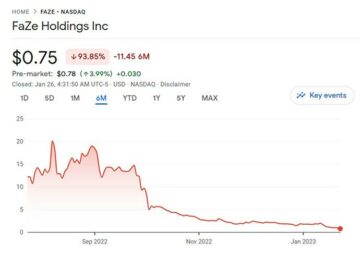We have reached the end of Nvidia’s phased roll-out of new RTX 40-series cards, released under the ‘Super’ moniker – and what have we learned? Essentially, it’s a value play at the top and bottom of the new stack, with the RTX 4070 Ti Super landing a touch awkwardly in the middle. The RTX 4070 Super offered the biggest proportionate increase in compute power, delivering a nice performance bump over the vanilla 4070 for the same money, while 4070 Ti Super bumped up VRAM nicely, but delivered less of a frame-rate upgrade. RTX 4080 Super? There are some minor spec bumps, but the reality is that for the most part, you’re looking at nigh-on identical performance to the outgoing RTX 4080. You do, however, get a significant price drop – but once again, the feeling is that this is the maximum price the RTX 4080 should have had at launch and we’ve finally got it, 14 months on from the Ada launch.
The spec table below gives you some idea of how Nvidia has rebalanced the mid and upper range of the RTX 40-series line – but it illustrates the problem in beefing up the existing 4080. There’s little scope to increase the specs without moving onto the RTX 4090’s AD102 silicon. The firm has pushed as hard as it can with AD103 instead, meaning there’s the full complement of 10240 CUDA cores – but it’s a mere five percent increase in compute power over the standard RTX 4080. Augmenting this is the fastest GDDR6X modules Nvidia could find, but we’re still looking at just a 2.6 percent increase to memory bandwidth over the vanilla 4080.
What we’re left is reminds me very much of the days where Nvidia would launch a Titan product – say, the Titan X Pascal, and then months later release a GTX 1080 Ti – strategically shaved in some areas but fundamentally delivering nigh-on identical performance. We’ve done the benchmarks then, but as you’ll see, in most cases the RTX 4080 Super is one or two percentage points to the better (three to four if we’re really lucky!), but it’s basically the same, really. Some of the gains are so slight that singular benchmark runs could actually come in below RTX 4080 equivalents – perhaps down to minor variations in boost clock on a run-to-run basis. The bottom line? The specs are improved but this is fundamentally an RTX 4080 with a price cut and a paint job.
 RTX 40 Series Super Revamp: The Specs Look Fine, But What About Prices?
RTX 40 Series Super Revamp: The Specs Look Fine, But What About Prices?
| 4080 Super | 4080 | 4070 Ti Super | 4070 Ti | 4070 Super | 4070 | |
|---|---|---|---|---|---|---|
| Processor | AD103 | AD103 | AD103 | AD104 | AD104 | AD104 |
| CUDA Cores | 10240 | 9728 | 8448 | 7680 | 7168 | 5888 |
| Boost Clock | 2.56GHz | 2.51GHz | 2.61GHz | 2.61GHz | 2.48GHz | 2.48GHz |
| Mem Allocation | 16GB | 16GB | 16GB | 12GB | 12GB | 12GB |
| Mem Interface | 256-bit | 256-bit | 256-bit | 192-bit | 192-bit | 192-bit |
| Mem Bandwidth | 736GB/s | 717GB/s | 672GB/s | 504GB/s | 504GB/s | 504GB/s |
| TGP | 320W | 320W | 285W | 285W | 220W | 200W |
| US MSRP | $999 | $1199 | $799 | $799 | $599 | $599 |
| UK RRP | £969 | £1199 | £769 | £799 | £579 | £589 |
| Release date | 31/1/24 | Out | 24/1/24 | Out | 17/1/24 | Out |
For review, we received two renditions of the RTX 4080 Super – the Nvidia-produced Founders Edition and the Asus TUF Gaming version. Both of them operate to reference specifications and to the best of my testing, produce identical performance outside of margin of error differences. However, in the flesh, they are two very different propositions.
The Founders Edition card – from my perspective, at least – is a known entity. It uses the exact same cooler and overall design as the RTX 4080 and RTX 4090, meaning you’re getting a very large triple-slot card with impeccable industrial design and cool and quiet operation. In keeping with the design changes made with the RTX 4070 Super, the new offering is pure black, looking absolutely terrific. Power is delivered via the usual 12VHPWR socket and video outputs consist of the Nvidia standard complement: three DisplayPort 1.4a and an HDMI 2.1.
The Asus TUF Gaming version is frankly gigantic – 348mm long vs the 310mm of the Founders Edition. It’s a quad-slot design, with a vast, plainly visible heatsink and relatively discreet RGB lighting. The shroud is plastic, meaning it feels cheaper to the touch than the FE model, though the backplate is metal. Similar to the Nvidia version, the 12VHPWR socket is used for power input, but in addition to the three DisplayPorts on the rear, there are two HDMI outputs up against the single one on the FE.
Both of these cards are operationally the same, deliver the same performance and both are available at MSRP. In practise, neither of them have any acoustic issues whatsoever – they’re both whisper quiet, to the point where the fans on my Noctua D15 CPU cooler are far, far louder when my Core i9 13900K is under load. I’d take the Founders Edition for its aesthetic and noticeably superior build quality, but if you want RGB or a second HDMI port, the Asus has those things.
Attribution
With the preliminaries out of the way, it’s time to get into the benchmarks proper. As usual, we’re using a high-end rig that pairs a Core i9 13900K with 6000MT/s G.Skill DDR5 and an Asus ROG Maximus Hero Z690 motherboard, minimising CPU bottlenecking to show GPU differences more clearly.
Nvidia GeForce RTX 4080 Super Analysis
- Introduction [This Page]
- RT benchmarks: Dying Light 2, Cyberpunk 2077, Control
- RT benchmarks: Metro Exodus Enhanced Edition, F1 22, Marvel’s Spider-Man: Miles Morales
- RT/DLSS/FSR2/DLSS3 benchmarks: Cyberpunk 2077, Dying Light 2, Forza Horizon 5, Marvel’s Spider-Man: Miles Morales
- Game benchmarks: Control, Cyberpunk 2077, F1 22, Forza Horizon 5
- Game benchmarks: Hitman 3, A Plague Tale: Requiem, Returnal, Marvel’s Spider-Man: Miles Morales
- Conclusions, value and recommendations
- SEO Powered Content & PR Distribution. Get Amplified Today.
- PlatoData.Network Vertical Generative Ai. Empower Yourself. Access Here.
- PlatoAiStream. Web3 Intelligence. Knowledge Amplified. Access Here.
- PlatoESG. Carbon, CleanTech, Energy, Environment, Solar, Waste Management. Access Here.
- PlatoHealth. Biotech and Clinical Trials Intelligence. Access Here.
- Source: https://www.eurogamer.net/digitalfoundry-2024-nvidia-geforce-rtx-4080-super-review?utm_source=feed&utm_medium=rss&utm_campaign=feed
- 1
- 14
- 22
- 40
- 4k
- 7
- a
- A Plague Tale: Requiem
- About
- absolutely
- actually
- ADA
- ADDITION
- aesthetic
- again
- Against
- an
- and
- any
- ARE
- areas
- arrival
- as
- Asus
- ASUS ROG
- At
- available
- bandwidth
- basis
- below
- Benchmark
- benchmarks
- BEST
- Better
- Biggest
- Black
- Boost
- both
- bottom
- Bottom Line
- build
- but
- CAN
- card
- Cards
- cases
- changes
- clearly
- click
- come
- complement
- Compute
- content
- Control
- cookie
- cookies
- cool
- Core
- could
- cover
- CPU
- Cut
- Cyberpunk
- Cyberpunk 2077
- days
- deliver
- delivered
- delivering
- Design
- details
- differences
- different
- direct
- discussing
- do
- done
- down
- Drop
- Dying Light 2
- e
- edition
- enable
- end
- enhanced
- entity
- equivalents
- error
- Essentially
- Eurogamer
- Event
- existing
- Exodus
- F1
- F1 22
- false
- fans
- far
- Fastest
- feels
- Figure
- Finally
- find
- fine
- Firm
- five
- For
- Forza
- Forza Horizon
- Forza Horizon 5
- founders
- four
- from
- full
- fundamentally
- G
- gains
- gallery
- Gaming
- GDPR
- Get
- getting
- gives
- got
- GPU
- had
- Hard
- has
- Have
- HDMI
- here
- Hero
- High-End
- hitman 3
- horizon
- How
- however
- HTTPS
- i
- idea
- identical
- if
- illustrates
- image
- Improved
- in
- incoming
- Increase
- industrial
- industrial design
- input
- instead
- into
- Is
- issues
- IT
- ITS
- Job
- jpg
- just
- keeping
- known
- Label
- Landing
- large
- later
- launch
- learned
- least
- left
- less
- light
- Lighting
- Line
- Little
- ll
- load
- loading
- Long
- Look
- looking
- louder
- made
- manage
- margin
- Marvel
- me
- meaning
- memory
- mere
- Message
- metal
- Metro
- mid
- Middle
- minor
- model
- modules
- money
- months
- more
- most
- moving
- msrp
- much
- my
- New
- Nice
- nvidia
- Nvidia GeForce RTX 4080
- of
- offered
- offering
- on
- once
- One
- onto
- operate
- operation
- or
- out
- outputs
- outside
- over
- overall
- page
- paint
- pairs
- part
- percent
- percentage
- performance
- perhaps
- perspective
- Phased
- Plague
- plastic
- plato
- plato data intelligence
- platodata
- platogaming
- play
- please
- Point
- Points
- power
- price
- prices
- Problem
- Produce
- Product
- proper
- proportionate
- propositions
- pure
- pushed
- quality
- range
- RE
- reached
- Reality
- really
- received
- reference
- relatively
- release
- released
- Returnal
- review
- rgb
- rig
- ROG
- runs
- s
- same
- say
- scope
- second
- see
- Series
- settings
- should
- show
- shroud
- significant
- Silicon
- similar
- single
- skill
- So
- some
- Specs
- spider-man
- stack
- standard
- still
- Strategically
- super
- superior
- table
- Take
- tale
- targeting
- Team
- Testing
- than
- that
- The
- The Bottom Line
- Them
- then
- there
- These
- they
- things
- this
- those
- though
- three
- time
- titan
- to
- top
- touch
- TUF
- two
- under
- until
- up
- upgrade
- upper
- used
- uses
- using
- usual
- value
- variations
- vast
- ve
- version
- very
- via
- Video
- vs
- want
- way
- we
- What
- when
- where
- while
- Whisper
- window
- with
- without
- would
- X
- you
- youtube
- zephyrnet











